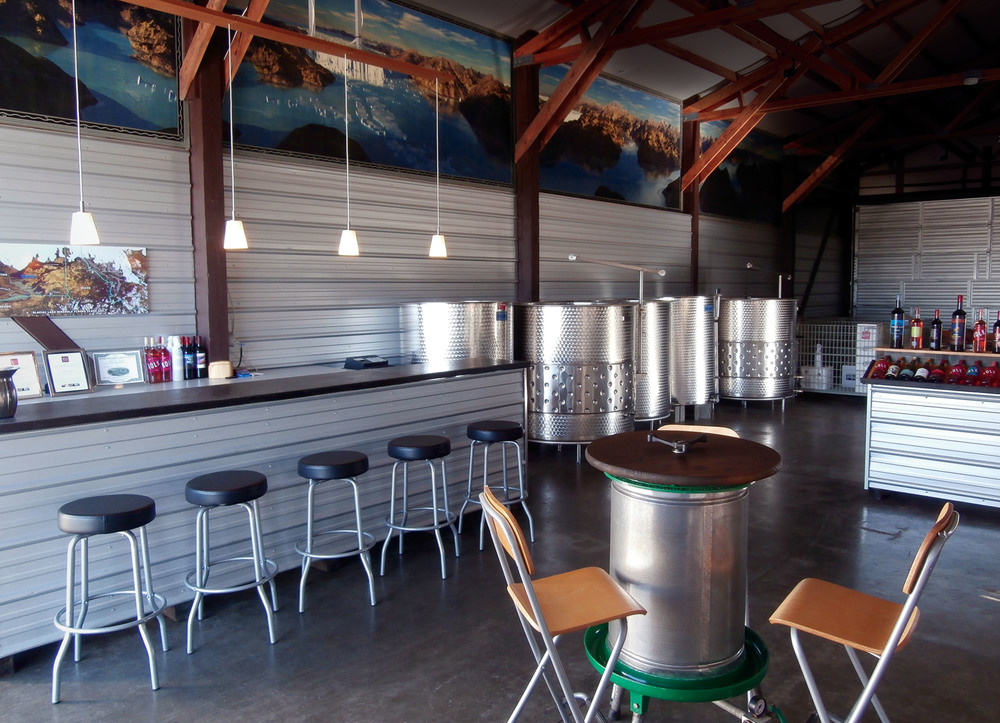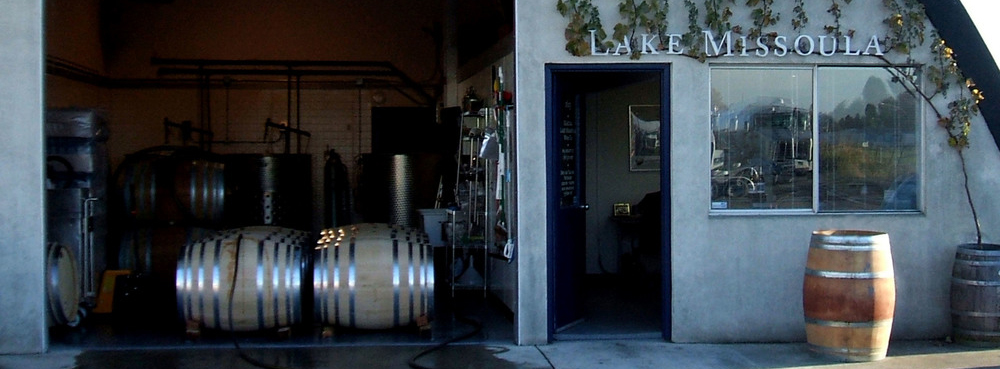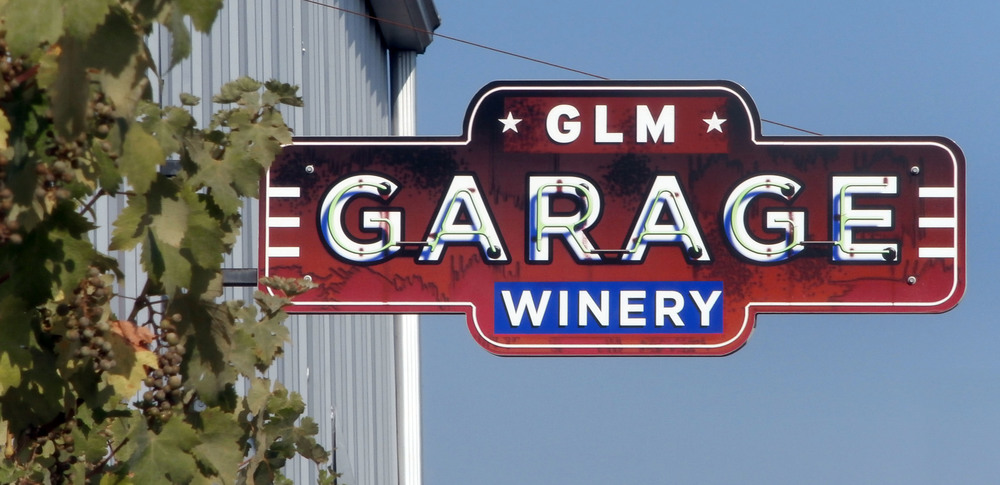By Dan Radil

The husband and wife team of Tom Davis and Tracey DeGraff have earned a reputation for doing things just a bit differently. Photo by Dan Radil.
Innovation and unconventionality are commonplace at GLM Wine Company, a boutique winery tucked away in the far northwest corner of Whatcom County in Blaine, Washington, just off the second-to-last I-5 exit before the Canadian border.
Husband-and-wife winemakers/owners, Tom Davis and Tracey DeGraff, have earned a reputation for doing things just a bit differently. That applies not only to how they met, but to the winemaking practices they use and the logistics of running their tasting room as well.
Different, of course, doesn’t necessarily mean a bad thing, and the couple will be the first to tell you that considerable time and research have gone into developing the wines of GLM and making them what they are today.
THE CANADIAN CONNECTION
Davis is a St. Louis native who moved with his family to Port Moody, British Columbia, a suburb of Vancouver, in 1967. He currently holds “landed immigrant” (permanent resident) status and plans to apply for Canadian citizenship in the near future.
DeGraff, on the other hand, was born in Calgary and later moved to Vancouver. It was there where the two met in 1996, albeit under slightly strange circumstances.
“I was a bartender at the Granville Island Hotel and I got fired,” Davis recalls, “and she got my job. Then we ended up meeting at a nightclub after work,” he says with a laugh.
The couple was married in 2009 and now resides in Steveston, BC, a small community located within the city of Richmond, just south of Vancouver. When not working at their day jobs – Davis at a printing company and DeGraff as a server for the Westin Bayshore in Vancouver – the two make the 30-minute commute from their home to the winery tasting room and production facility in Blaine, just a stone’s throw across the international border.
FROM MICROBREWERY TO MICROWINERY
Davis’s foray into winemaking originated as a natural progression from his work in the early 1990’s as a brewmaster at Horseshoe Bay Brewery in West Vancouver, one of Canada’s first microbreweries.
“At the same time I was working as a bartender on the side and I started buying and drinking a lot of good wine and getting interested in wine. My employer told me to learn more about wine, so I did.”
That eventually led to home winemaking, an enterprise which DeGraff recalls was quickly getting out of hand. “It got to the point where he was buying a ton of grapes, making wine, making beer, selling wine to friends…”
“And I never considered starting a winery,” Davis adds, “until they started loosening up credit to the stupid levels they did in the late 90’s. Then suddenly, I could get a line of credit almost by just asking for it.”
Davis and DeGraff made what they term their first “serious” wine in 2000 from Washington-grown grapes from Yakima Valley’s Kendall Farms in Sunnyside. That proved to be the impetus that pushed them into full-time winemaking.
“We went on vacation in 2001, knowing it was our last vacation,” DeGraff says half-jokingly, “and then we started the winery in 2002.”

Inside the tasting room at GLM Wine Company, you’ll be treated to wines with names like Deluge, Kolk Blush, Kolk Rosé, The Denier, LaReine and LaRobe. They all have back stories that are as interesting as the wines themselves, which you’ll find on GLM’s website: www.glmwine.com.
NAMES AND METHODOLOGY
“We were originally going to call ourselves, ‘The Garagistes’ but there was already a wine store in Seattle that had that name,” says Davis. “So then, driving through Eastern Washington, we noticed the unusual landscape…and I learned that it was caused by the Missoula Floods.”
After a minor kerfuffle with a now-defunct Montana winery over their use of the name ‘Lake Missoula Winery,’ the pair decided on The Glacial Lake Missoula Wine Company, which is frequently shortened to GLM Wine Co. as today’s official winery name.
Since the winery’s inception, Davis has never been completely content to make “by the book” wines.
“We use the saigner method, which is a common practice in Bordeaux, Burgundy, and Australia…for all our reds,” he says. “We also will not harvest our grapes above 25˚ brix,” (which could result in high-alcohol wines) “so we don’t dilute our must.”
“And we’re also very careful about high acid/low pH for the entire existence of the wine.” That means the wines are acidified at crush, not near the end of the winemaking process and just prior to bottling.
Davis is also a big proponent of “enrobed wines,” where the juice of any red grape is removed and the skins are added to the juice of a white grape during fermentation. In the past, he’s used this method to produce a Marsanne wine fermented with the skins of Cabernet Sauvignon grapes. The result was a full-bodied white wine with a dark red color that has continued to cellar beautifully.
“I really hope someday people imitate (enrobed wines) because there are a million possibilities. Wine is really so boring and conservative in so many ways and this is a way to make ‘new’ wines…to innovate.”
A VARIETY OF VINEYARDS
GLM’s past vineyard sources have covered a broad range: from Rebecca’s Vineyard in Umpqua Valley, Oregon, to Yakima Valley’s Kestrel Vineyard. Their currently available 2015 Deluge, a bottling of 100-percent Cabernet Sauvignon, comes from Wickersham Vineyard near Yakima, “a nicely managed vineyard by Naches Heights’ Phil Cline,” says Davis.
Also notable is the 2017 Rock Flour Sauvignon Blanc. It’s sourced from Open Gates Vineyard, which is located on a north-facing hillside above the Wenatchee River. DeGraff notes that they picked these “perfect grapes” themselves and Davis is confident that the combination of malolactic fermentation and five months of barrel aging will “give the wine a little more seriousness.”
Another 100-percent Cabernet Sauvignon wine, the 2015 Reserve Deluge, was released in mid-2018 following an extended stay of 28 months in the barrel. The wine has big tannic structure and is a prime candidate for an additional five to 10 years in the cellar.
MAKING THE VISIT TO BLAINE
GLM Wine Company’s Blaine location makes it a destination winery, of sorts, but that doesn’t mean it’s the only local attraction for out-of-town visitors.
As a convenient stopping point between the metropolitan areas of Seattle and Vancouver BC, the winery is close to attractions in the greater Blaine area that include Drayton Harbor Oyster Company, The Vault Wine Bar, Birch Bay, and Semiahmoo Resort.
The winery’s small annual production of up to 250 cases limits its distribution to a handful of local restaurants and retailers. That means the best way to try these wines is to simply stop by the Blaine tasting room. You’re likely to find an “unusual” wine being poured there, along with a great story about the innovative methods that were used to create it.
GLM Wine Company is located at 1678 Boblett Street. Blaine, WA., 98230. Their tasting room hours are Saturday, Noon to 6 p.m. and Sunday, Noon to 5 p.m. Phone: (360) 332-2097. To learn more about Tom and Tracey and all of the wines they make at GLM Wine Company, visit: www.glmwine.com.
EDITOR’S NOTE: Dan Radil is a freelance wine writer and educator based in Bellingham, WA., and has been an avid follower and supporter of the Washington wine industry since the mid-1980s. He currently contributes to Wine Press Northwest and Bellingham Alive Magazine, is President of the Whatcom Beer & Wine Foundation, and produces a wine blog called: danthewineguy.com.



